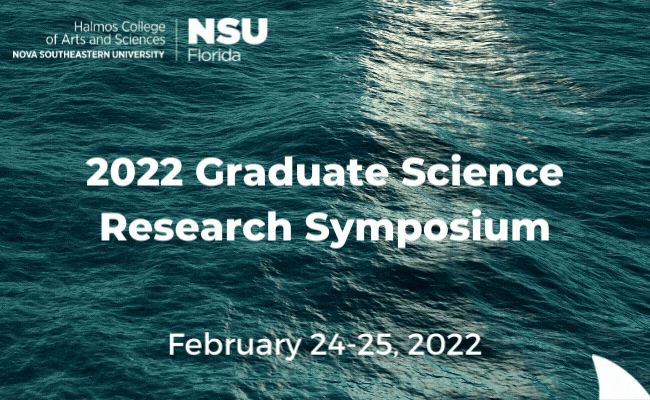Spatial and Temporal Environmental Variability in the West Lake Park Mangrove Ecosystem
Start
2-25-2022 3:00 PM
End
2-25-2022 3:15 PM
Type of Presentation
Oral Presentation
Abstract
Spatial and Temporal Environmental Variability in the West Lake Park Mangrove Ecosystem
Gretchen M. Spencer (gs1266@mynsu.nova.edu)
Committee Members: Tyler Cyronak, Derek Burkholder, and Lauren Nadler
Coastal ecosystems experience dynamic environmental conditions with widespread variability in seawater chemical parameters driven by many different processes. This study will monitor the spatial and temporal variability in sea water parameters within the West Lake Park mangrove ecosystem (Hollywood, FL) over the South Florida wet and dry seasons. Using a variety of in situ sensors, the mangrove system’s physical and chemical properties including seawater carbonate chemistry, dissolved oxygen, temperature, and salinity will be measured over different spatiotemporal scales. On top of using traditional sampling methods, two citizen science projects are being implemented to collect data: Smartfin and Aqualink. Oxygen, temperature, and salinity data will be collected at high temporal resolution (every 10 minutes) from a stationary Aqualink buoy. To complement the high-temporal, but low-spatial resolution data from the buoy, spatial surveys using a WavepHOx (temperature, pH, and oxygen) and Smartfin will be conducted via kayak. To date, the Aqualink buoy has been deployed since February 2021, while more detailed monitoring surveys were started in October of 2021. The temperature data collected since February 2021 indicates a strong seasonal cycle in water temperature, with smaller scale variability (daily and monthly) likely driven by tidal and diel insolation cycles. An oxygen sensor was deployed on the buoy for 61 days (October-December) and data indicates variability on similar frequencies to the temperature data. There are likely many complex biogeochemical processes acting to modify seawater chemistry within the West Lake mangrove ecosystem, all of which could be impacted by global climate change. This project will help to reveal what biogeochemical cycles are causing variations in seawater biogeochemistry which can help understand how climate change impacts may affect the mangrove in the future. Continuation of the project will involve utilizing the local K-12 schools by engaging with the active citizen science project we call Smart Estuaries.
Spatial and Temporal Environmental Variability in the West Lake Park Mangrove Ecosystem
Spatial and Temporal Environmental Variability in the West Lake Park Mangrove Ecosystem
Gretchen M. Spencer (gs1266@mynsu.nova.edu)
Committee Members: Tyler Cyronak, Derek Burkholder, and Lauren Nadler
Coastal ecosystems experience dynamic environmental conditions with widespread variability in seawater chemical parameters driven by many different processes. This study will monitor the spatial and temporal variability in sea water parameters within the West Lake Park mangrove ecosystem (Hollywood, FL) over the South Florida wet and dry seasons. Using a variety of in situ sensors, the mangrove system’s physical and chemical properties including seawater carbonate chemistry, dissolved oxygen, temperature, and salinity will be measured over different spatiotemporal scales. On top of using traditional sampling methods, two citizen science projects are being implemented to collect data: Smartfin and Aqualink. Oxygen, temperature, and salinity data will be collected at high temporal resolution (every 10 minutes) from a stationary Aqualink buoy. To complement the high-temporal, but low-spatial resolution data from the buoy, spatial surveys using a WavepHOx (temperature, pH, and oxygen) and Smartfin will be conducted via kayak. To date, the Aqualink buoy has been deployed since February 2021, while more detailed monitoring surveys were started in October of 2021. The temperature data collected since February 2021 indicates a strong seasonal cycle in water temperature, with smaller scale variability (daily and monthly) likely driven by tidal and diel insolation cycles. An oxygen sensor was deployed on the buoy for 61 days (October-December) and data indicates variability on similar frequencies to the temperature data. There are likely many complex biogeochemical processes acting to modify seawater chemistry within the West Lake mangrove ecosystem, all of which could be impacted by global climate change. This project will help to reveal what biogeochemical cycles are causing variations in seawater biogeochemistry which can help understand how climate change impacts may affect the mangrove in the future. Continuation of the project will involve utilizing the local K-12 schools by engaging with the active citizen science project we call Smart Estuaries.


